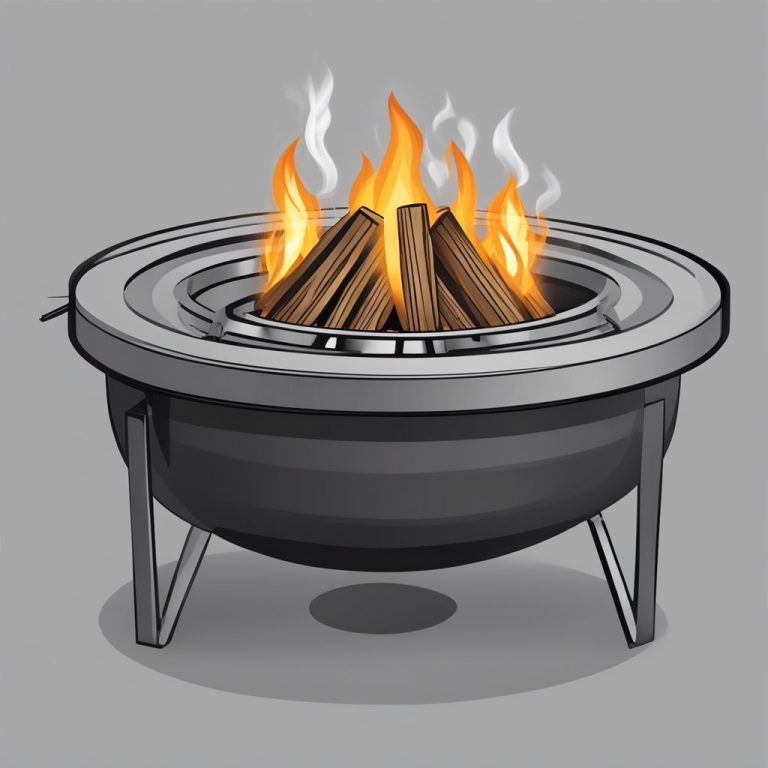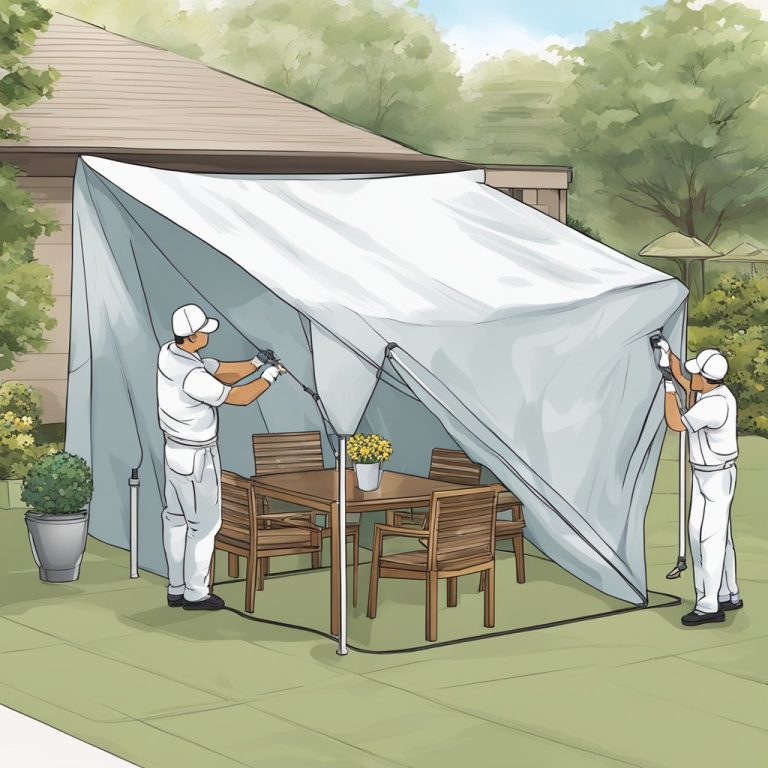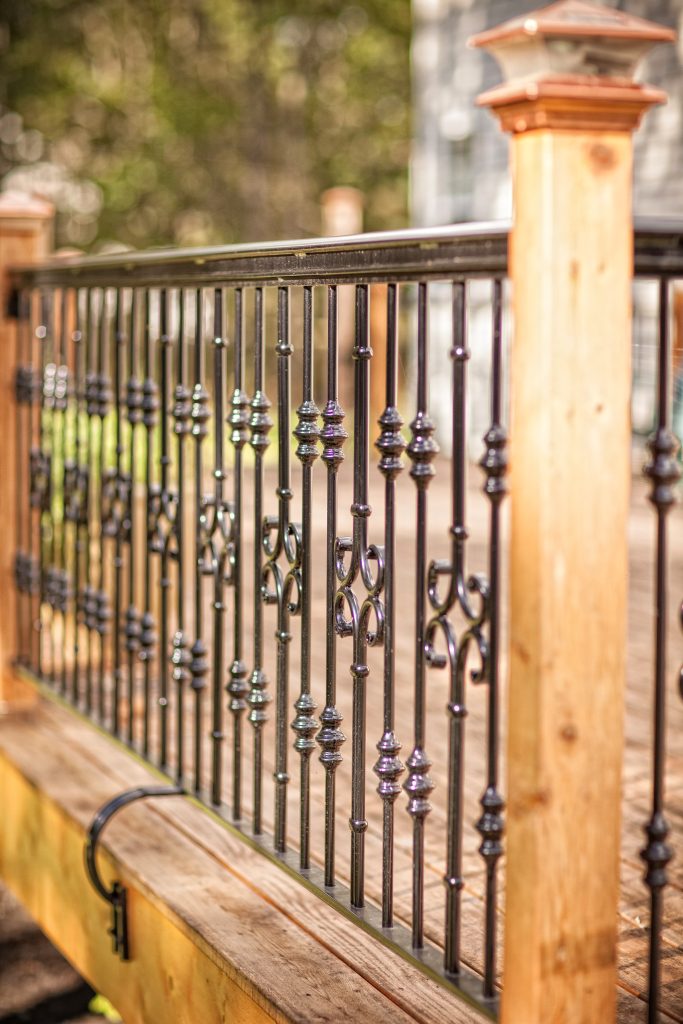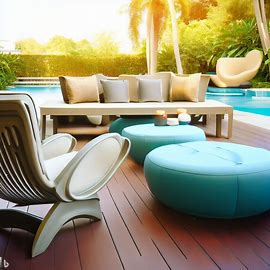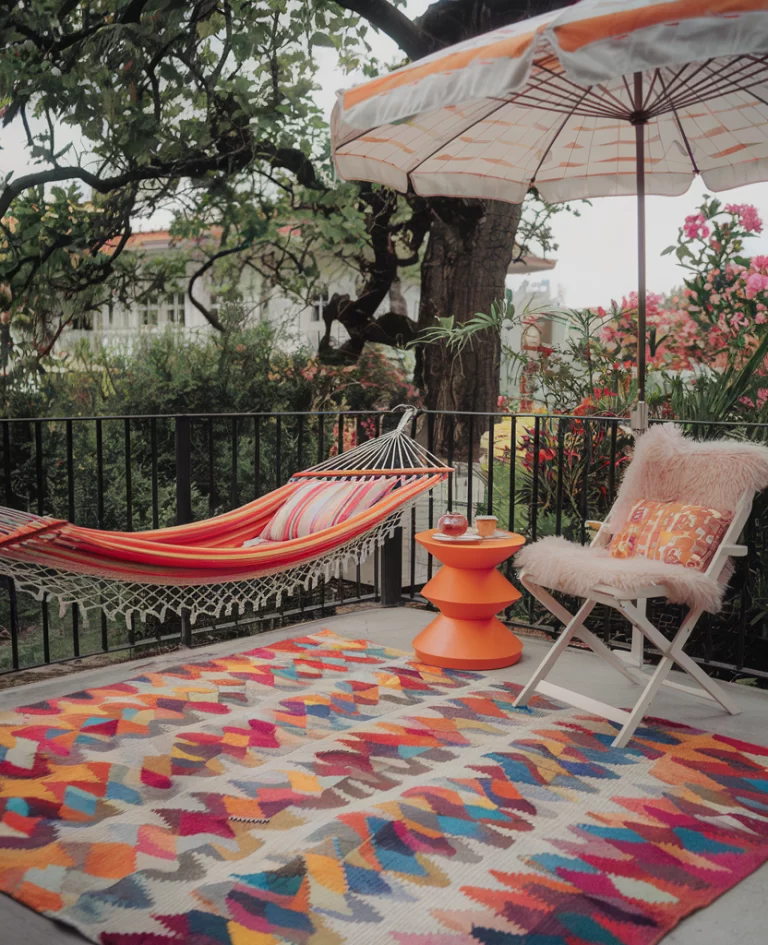15 Attractive Deck Skirting Ideas
15 Attractive Deck Skirting Ideas to Elevate Your Outdoor Space
Giving your deck a finished look can make a big difference in your outdoor space. Deck skirting offers a simple way to cover the area beneath your deck while boosting its overall appeal and usefulness.
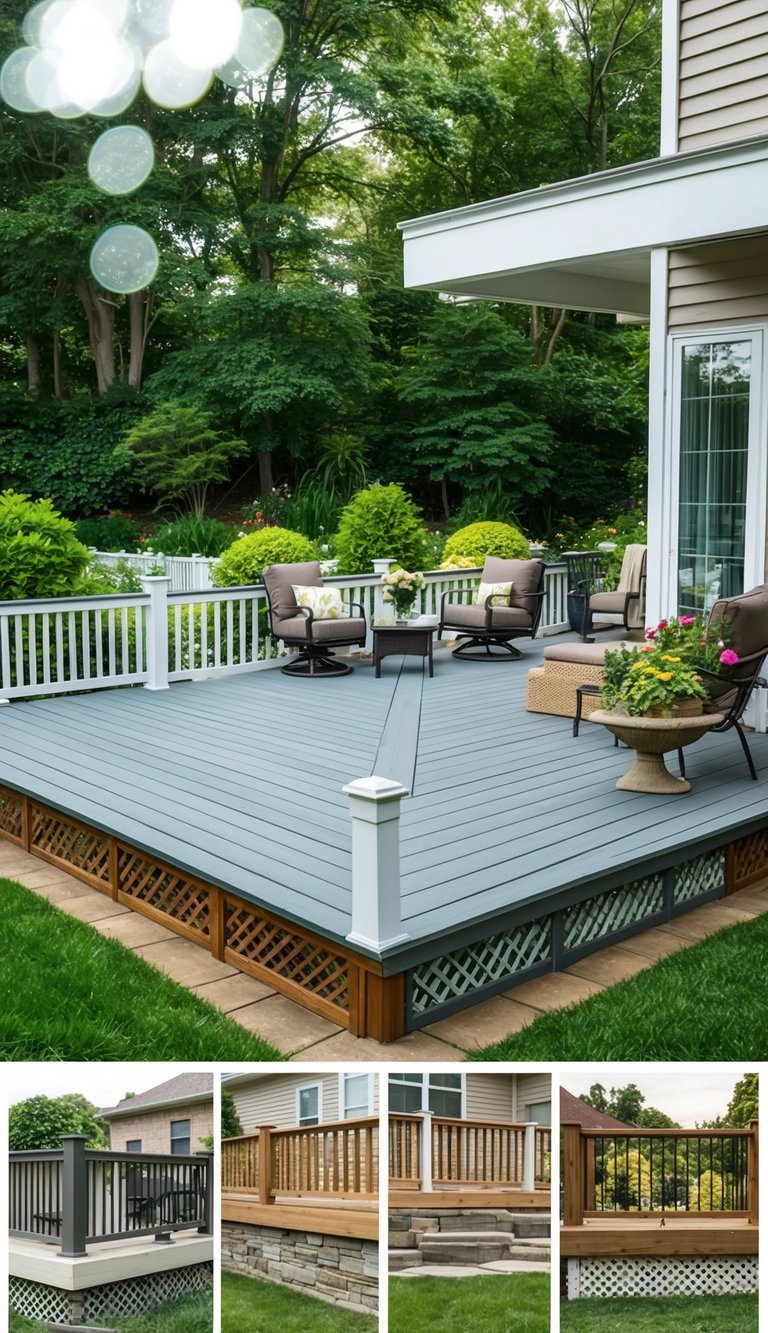
With the right skirting ideas, you can improve your deck’s appearance and even add extra storage or privacy. Whether you want something subtle or eye-catching, there are plenty of ways to personalize your deck and make your backyard more inviting.
Lattice Panel Skirting
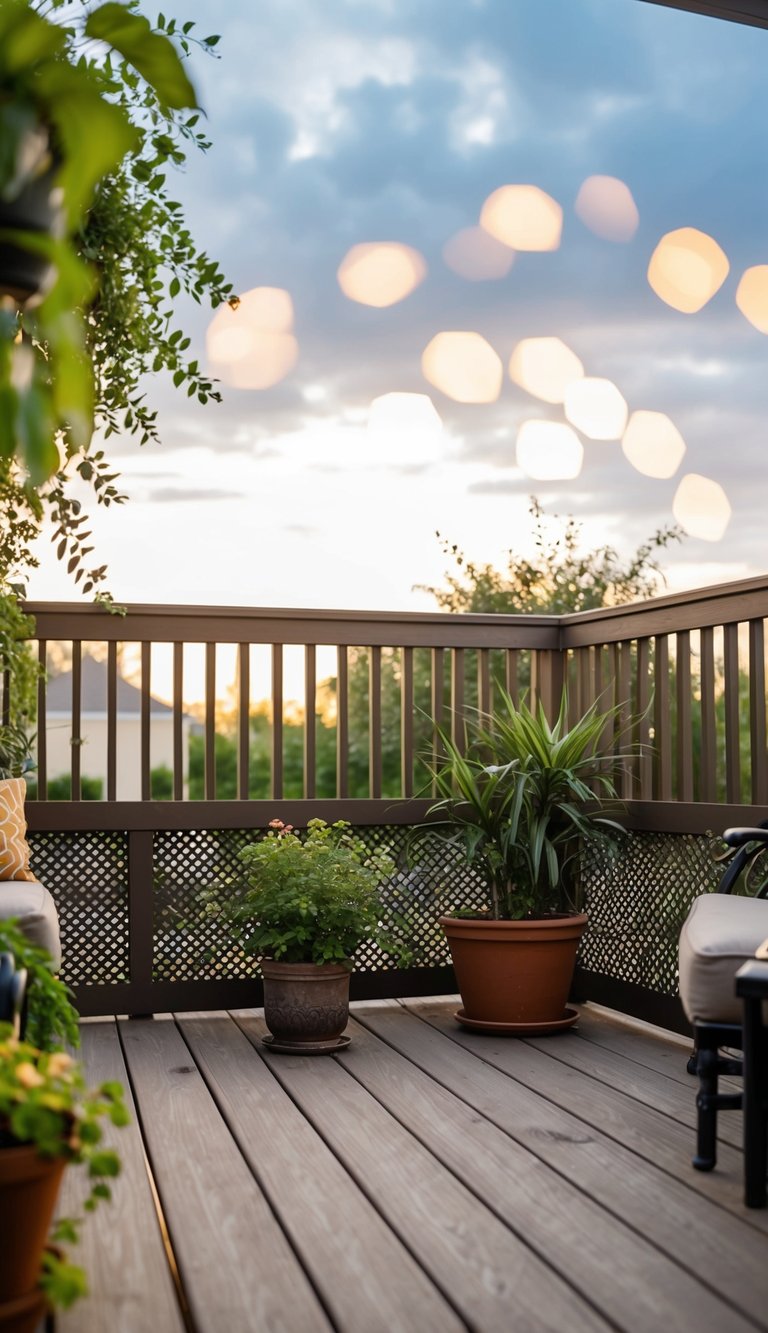
Lattice panel skirting is a classic choice that works with many deck styles. With its crisscross pattern, it adds both visual interest and ventilation. You can find panels in wood, vinyl, or composite materials.
You have flexibility to paint or stain lattice panels to match your deck. White lattice offers a fresh look, while natural or dark tones blend in with leafy landscapes.
Installation is straightforward. Most panels fit easily onto frames around your deck’s base. If you have uneven ground, you can trim panels to fit the slope.
Lattice skirting stands out for letting air flow freely, which helps prevent mold and mildew. At the same time, it provides the right amount of privacy while keeping animals out from under your deck.
This option is budget-friendly and widely available at home improvement stores. Whether you want to keep things traditional or modern, lattice panel skirting gives you plenty of room to make the look your own.
Stone Veneer Base
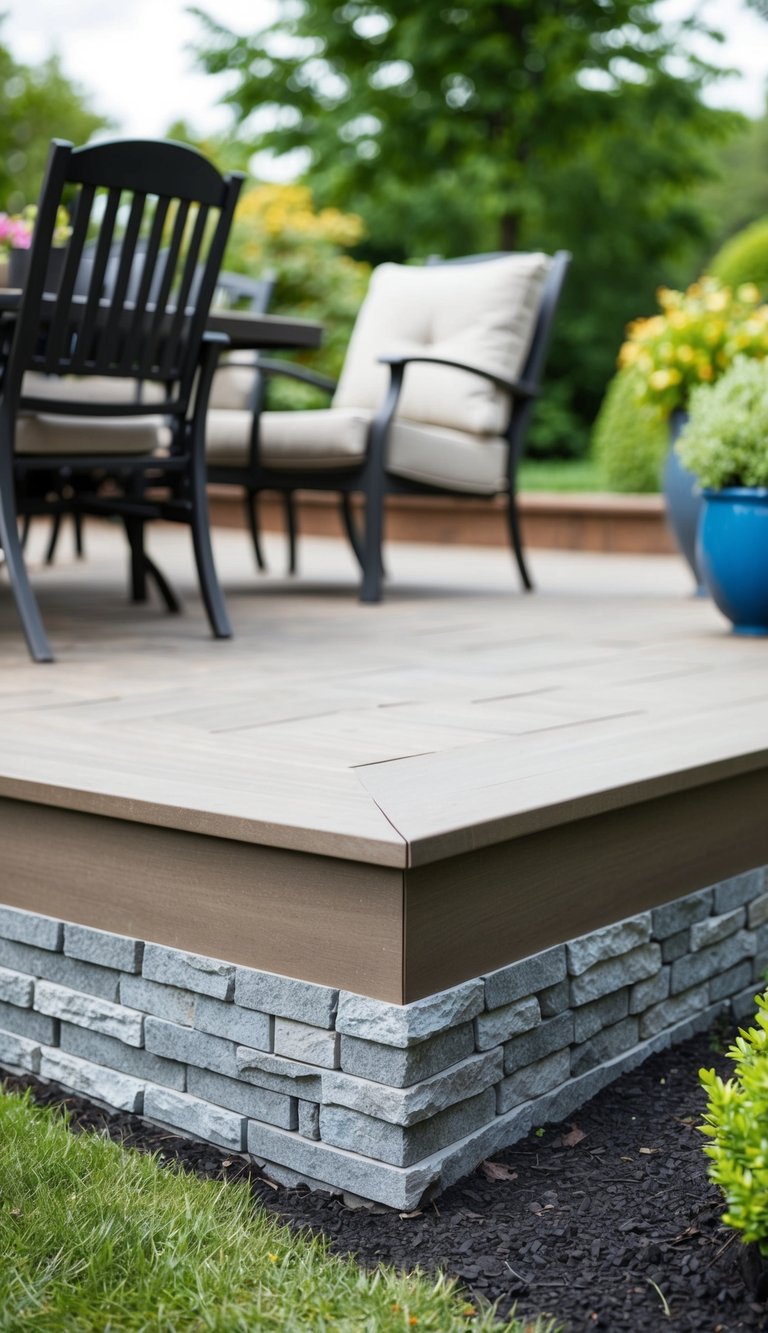
A stone veneer base can give your deck a polished and sturdy look. You get the charm of real stone without the significant weight or high cost. Veneer panels are made to fit together easily, saving you time on installation.
You can choose from a range of colors and textures to match your home’s style. Whether you prefer light grays, classic tans, or mixed stacked stones, there’s an option that fits your taste. The panels typically resist moisture and weather well, so they maintain their appearance.
Stone veneer works well for hiding the underside of your deck. It remains steadfast through different seasons, making it a practical choice for many climates. It’s also easy to maintain, as it usually just needs a quick rinse to stay clean.
This type of skirting makes your deck look grounded and adds to your property’s curb appeal. If you want to combine natural-inspired style with easy upkeep, a stone veneer base is a reliable solution.
Vertical Wood Planks
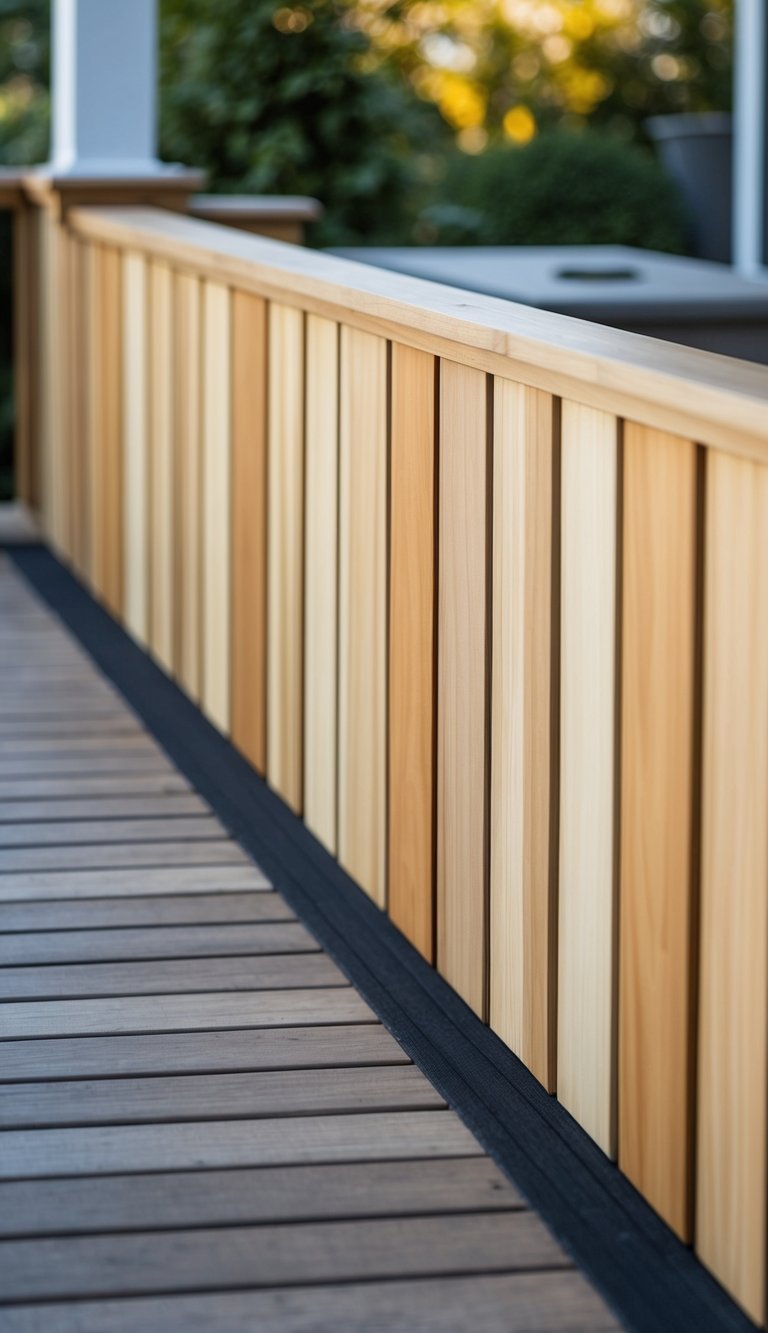
Vertical wood planks are a classic choice for deck skirting. They create a clean and organized look, making your deck feel neat and finished. You can use cedar, pine, or composite materials, depending on your budget and style.
Installing vertical planks is fairly straightforward. You attach the boards upright along the deck’s perimeter, spacing them as closely or widely as you prefer. Paint or stain them to match or complement your deck’s color.
This style can help make your deck look taller and more visually appealing. It also provides good airflow under your deck, which helps prevent moisture buildup. If you want extra privacy, install the planks close together for a solid, continuous surface.
Vertical wood planks pair well with both modern and traditional deck designs. They’re easy to maintain and can be refreshed with a new coat of paint whenever needed.
Brick Skirting
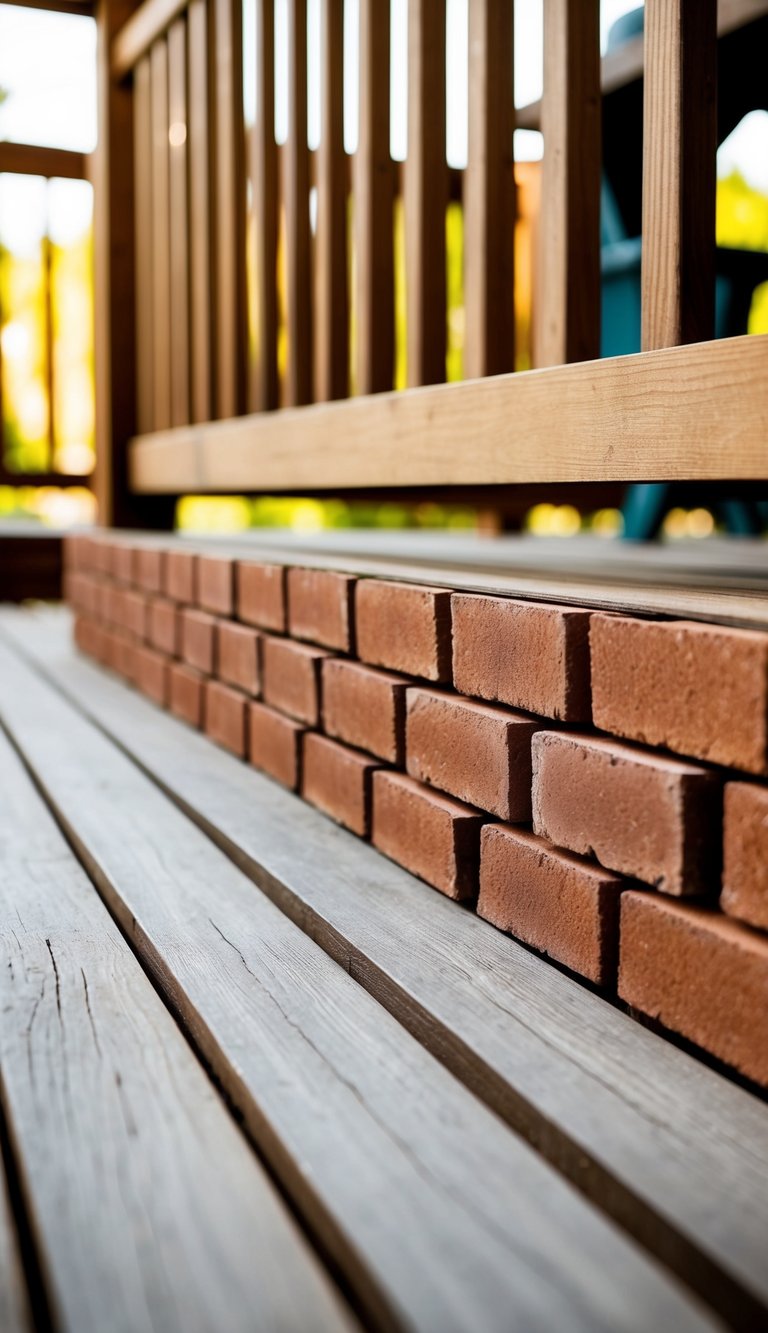
Brick skirting gives your deck a classic, polished look that pairs well with both modern and traditional homes. If you want something that looks sturdy and timeless, brick is a reliable choice.
You can match the brick color to your home for a coordinated feel, or pick a contrasting shade for extra visual interest. Either way, brick skirting helps to smoothly blend your deck into your backyard landscape.
Brick is also resistant to moisture and pests, making it a practical option in many climates. Cleaning and maintenance are straightforward, as brick tends to hold up well over time with minimal care.
Using brick skirting can also help hide under-deck storage or plumbing. This way, the area looks tidy and organized while adding curb appeal to your outdoor space.
Vinyl Board Skirting

Vinyl board skirting gives your deck a neat, finished look without much fuss. This material is lightweight and easy to handle, making installation a straightforward task, even for DIY beginners.
You can choose from a range of colors and textures, so it’s easy to find an option that blends with your deck and home exterior. Vinyl is also resistant to moisture and insects, so you don’t have to worry as much about long-term upkeep.
To keep vinyl boards looking their best, simply rinse them occasionally with a hose. They don’t require sanding or painting, which saves you both time and effort throughout the seasons.
With vinyl board skirting, you have the flexibility to create designs that range from classic to modern. Some homeowners like adding little vents or access panels, which can help with airflow underneath the deck. This practical and attractive option keeps your space tidy and appealing.
Cedar Board with Trim
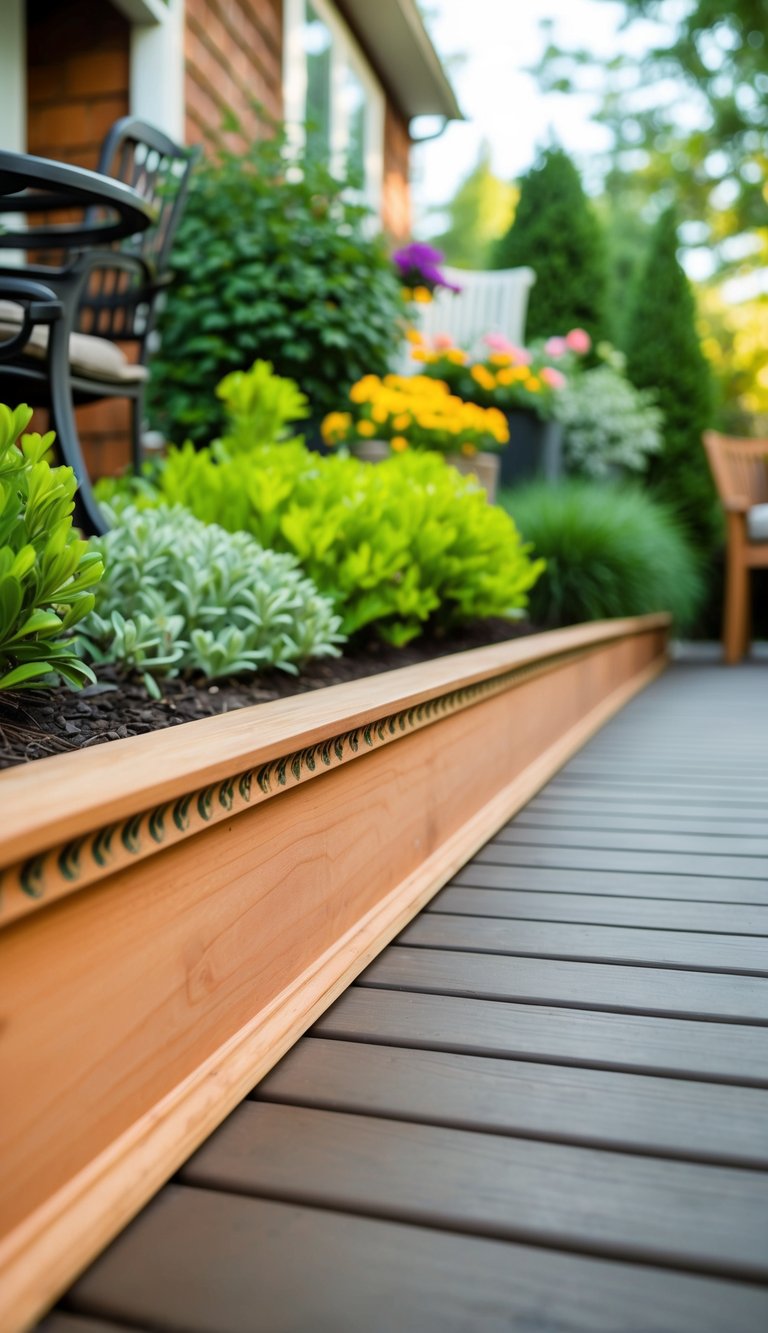
Cedar board skirting adds a warm, natural look to your deck. The wood’s appealing grain and rich color make it a popular choice if you want a classic design.
Adding a simple trim to the top and bottom of each panel can tie the look together. Trim helps frame the boards and creates a more polished finish.
You can arrange cedar boards vertically or horizontally, depending on what suits your space. Both layouts work well for hiding the frame and under-deck area.
Cedar is naturally resistant to insects and decay. This makes it a practical option if you want durability with less maintenance.
Consider staining the cedar to keep its color, or let it weather to a soft gray for a rustic effect. Trim pieces can be left natural, painted, or stained to match or contrast with the boards.
This style fits with many deck designs, from modern to traditional homes. It’s an approachable project if you want to DIY your deck skirting.
Rock and Gravel Border
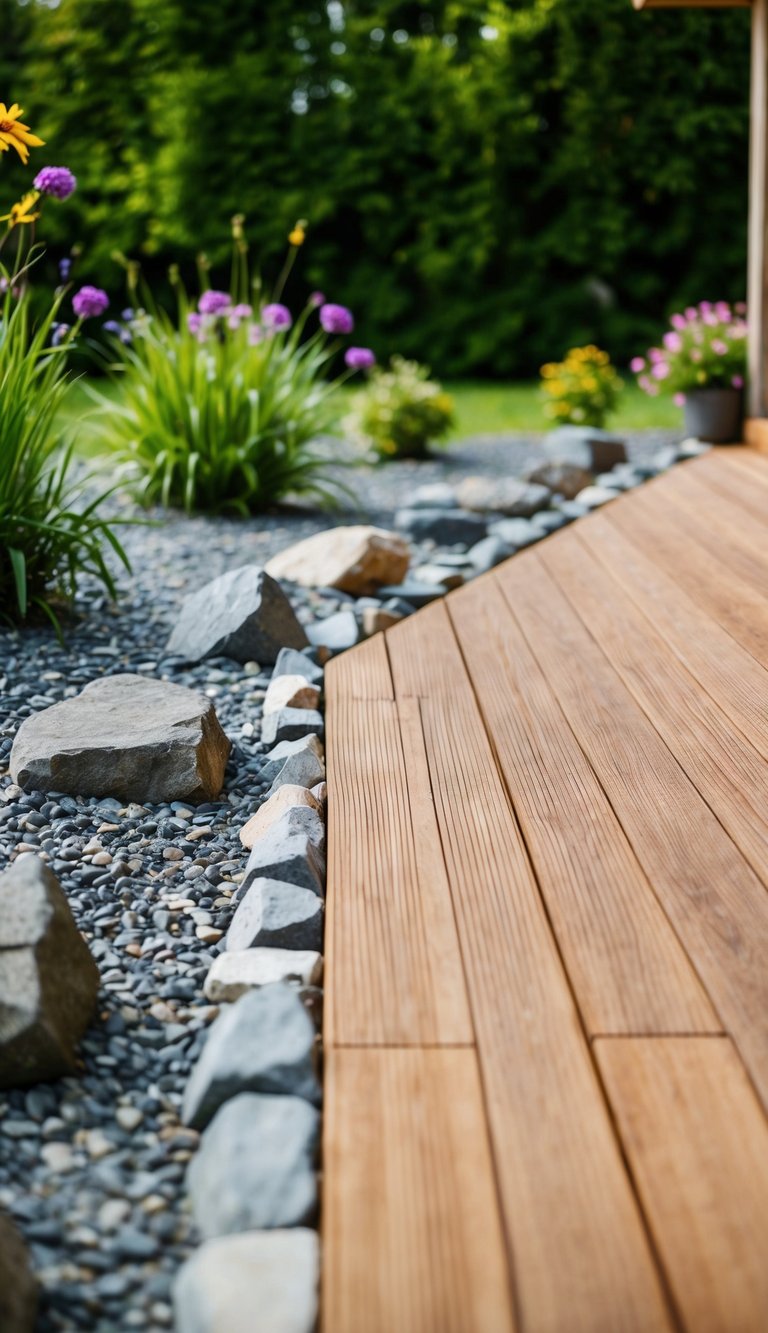
A rock and gravel border offers a neat and low-maintenance way to finish the space beneath your deck. You can choose river rocks or crushed stone in a color that matches your home or outdoor style.
Laying down landscape fabric first will help prevent weeds from popping up through the gravel. This keeps the area looking clean and tidy with much less effort.
A rock border also helps with drainage around your deck. Water moves easily through rocks and gravel, so you won’t have to worry about puddles forming after heavy rain.
You can edge the border with metal, brick, or wood to keep everything in place. This gives your skirting a sharp, finished line.
If you want a touch of greenery, place potted plants or low ground covers along the border. This adds texture without making care difficult.
Horizontal Board Slats
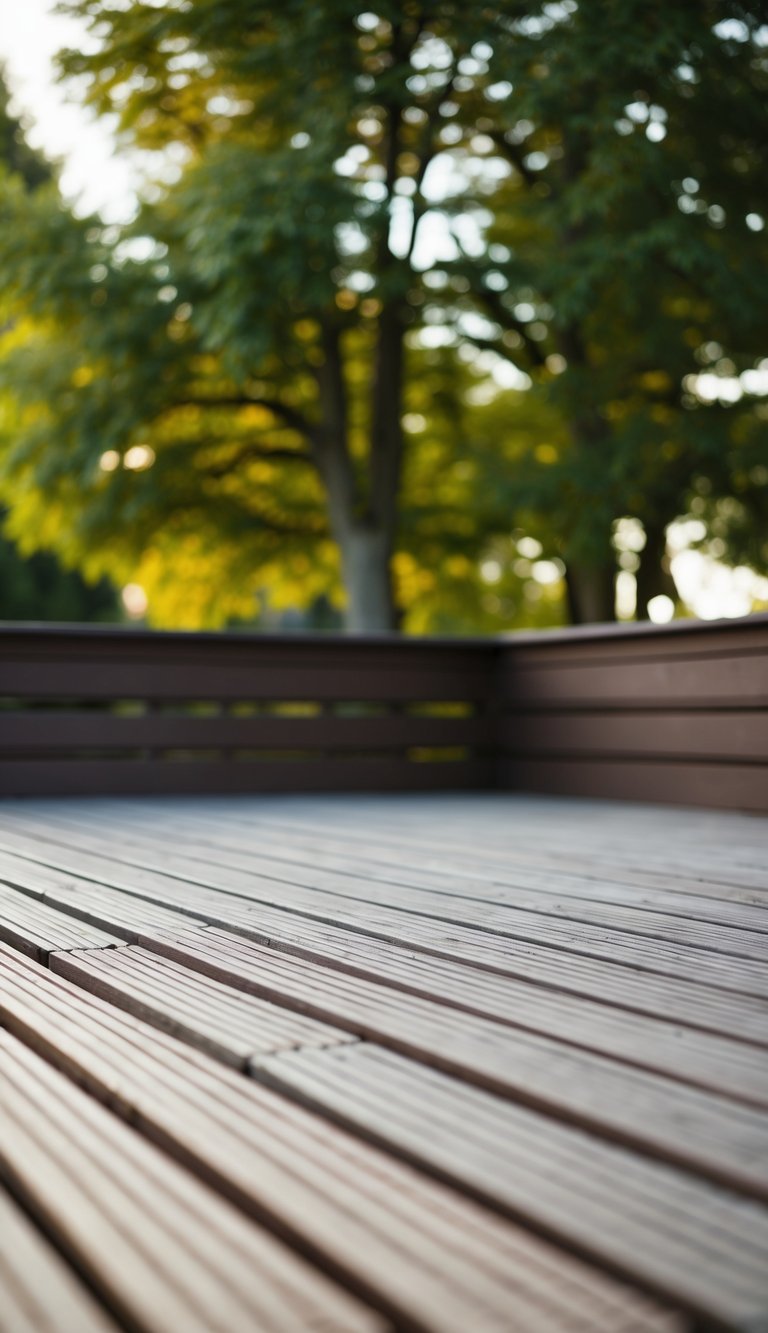
Horizontal board slats give your deck a modern and tidy look. Installing these boards so they run side to side creates clean lines and adds some visual width under your deck.
You can use various woods like cedar or pressure-treated lumber. Painted or stained finishes let you match the skirting with your existing deck or home color.
This style also offers ventilation, which helps prevent moisture build-up beneath the deck. Evenly spaced slats keep small animals out while letting air flow freely.
Horizontal slats suit both raised and ground-level decks. If you want a simple style that doesn’t distract from your deck’s design, this option is easy to maintain and straightforward to build.
Decorative Metal Panels
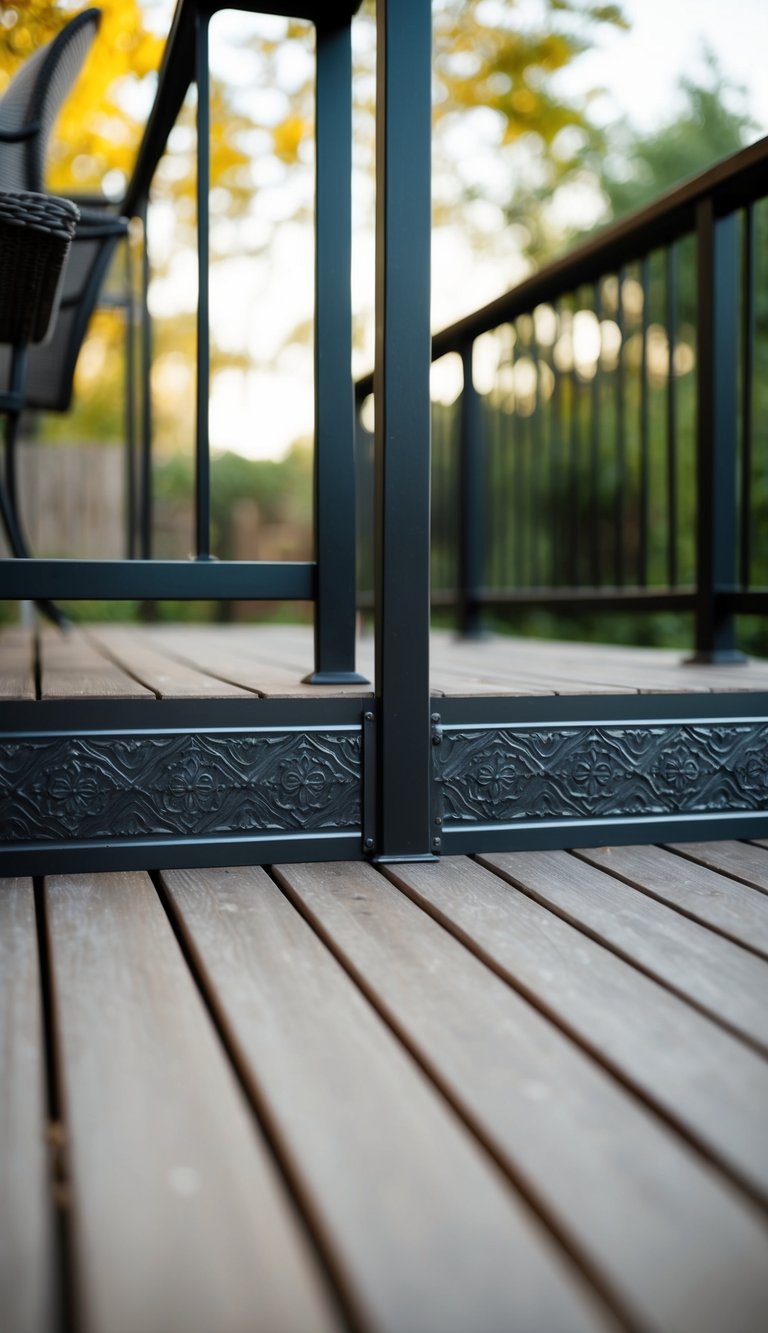
Decorative metal panels offer a modern touch for your deck skirting. They come in a range of patterns, including geometric shapes and floral designs. This choice brings a sleek and stylish look to your outdoor space.
You can find metal panels in various finishes such as black, bronze, or brushed nickel. These options let you choose a skirting style that matches the railing or accents of your deck.
Metal panels are durable and resist weather damage well. This means less maintenance for you throughout the year. They also provide airflow beneath your deck while keeping animals out.
Installation is typically straightforward, so you can finish the project over a weekend. You might use them as full panels or mix with wood frames to soften the look.
Some panels are customizable, letting you create a unique pattern just for your deck. You’ll get privacy, style, and long-lasting function all in one.
Gabion Basket Skirting
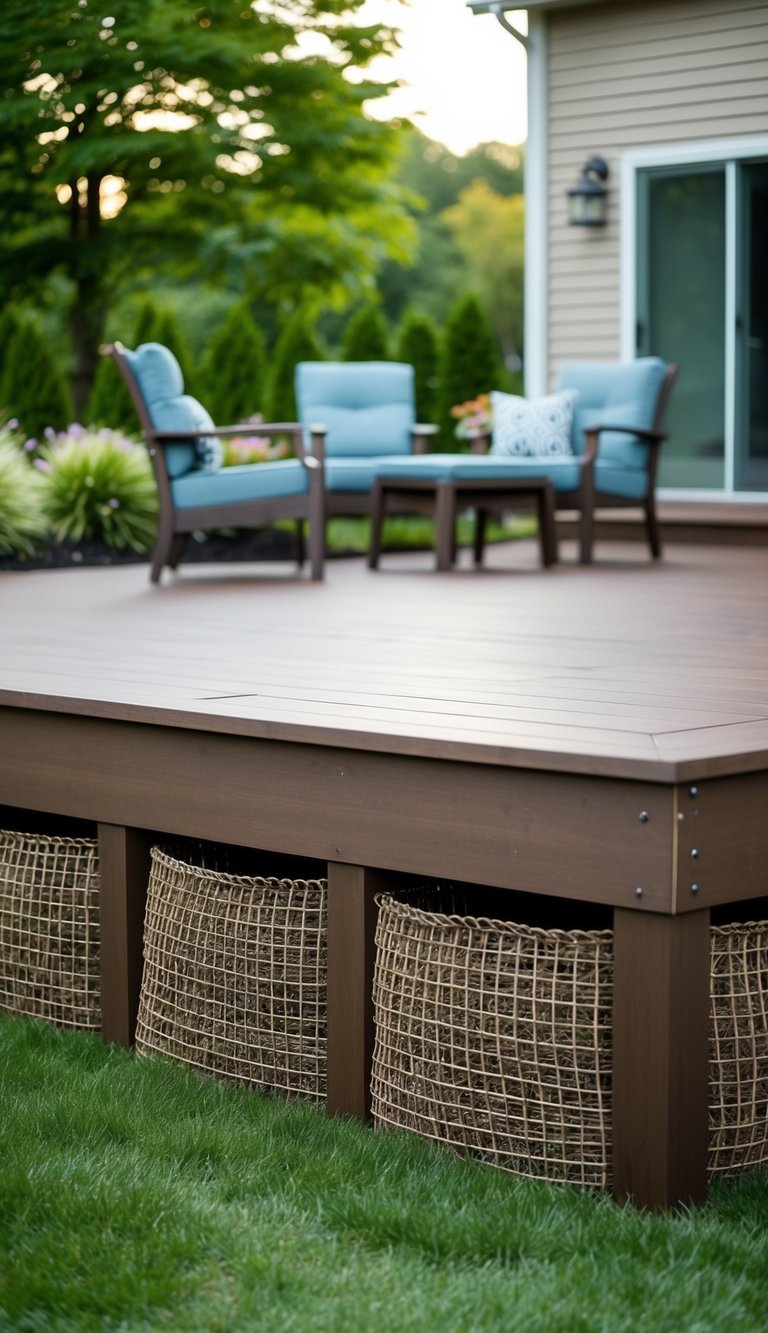
Gabion basket skirting uses wire cages filled with rocks to cover the area beneath your deck. This option brings a modern and natural look to outdoor spaces. The baskets can be filled with many types of stones, so you can match your deck’s style easily.
You’ll notice gabion baskets are durable and sturdy. They offer a solid barrier that can help keep animals from getting under your deck. The gaps between the rocks also support good airflow, reducing moisture buildup.
Installation is straightforward if you have basic tools and patience. You place the baskets along the perimeter and fill them with your chosen stones. It’s important to level the ground first for a neat appearance.
Maintenance is simple with gabion baskets. Occasionally check that the rocks stay compact and the wire remains rust-free. This style fits in well with various landscaping designs, especially if your yard has natural or rustic features.
Plant Boxes with Trellis
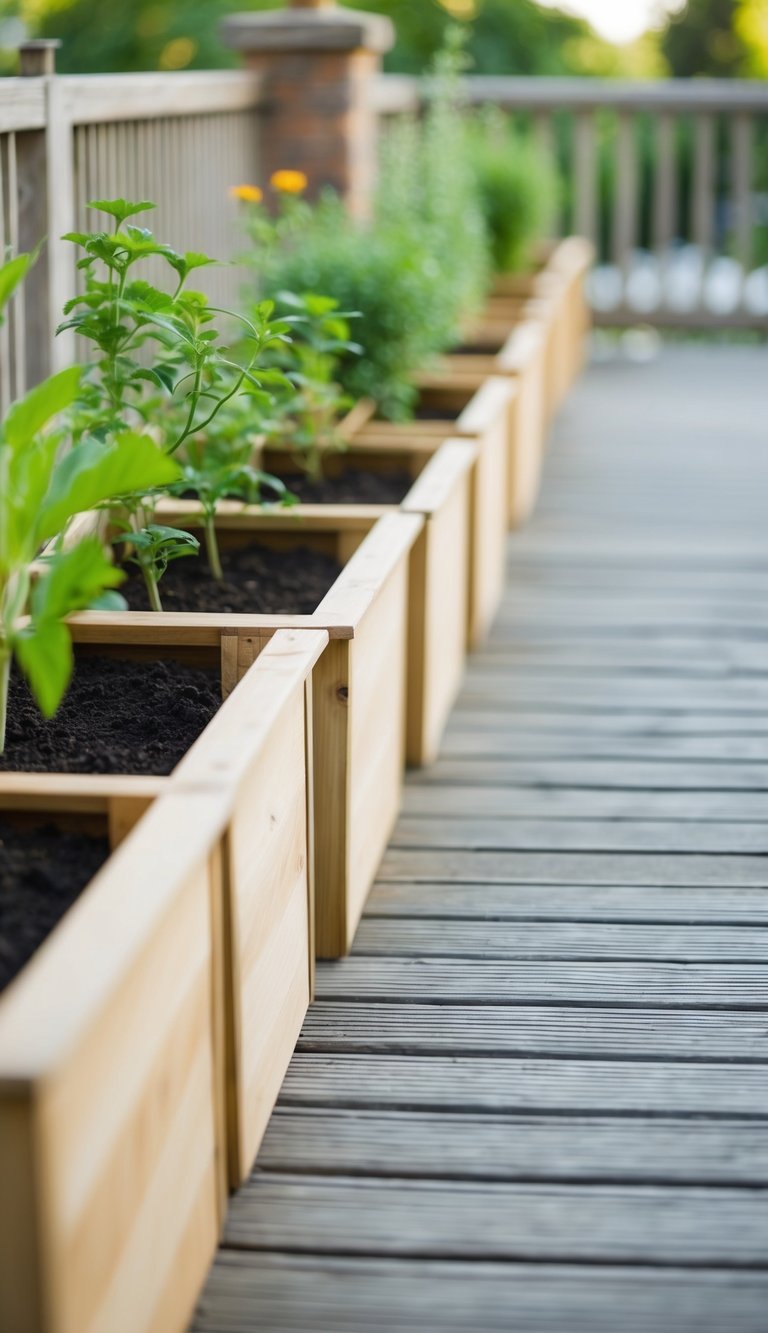
Adding plant boxes with a trellis along your deck skirting gives you privacy and a fresh look. You can grow flowering vines or climbing plants that soften the edges of the deck.
These boxes are easy to customize by choosing wood, metal, or composite materials to match your deck style. You can adjust the size of the boxes to fit the height and width of your skirting.
A trellis creates a vertical surface for plants without taking up much space. This is helpful if you have a smaller yard or want to keep the ground area clear.
As your plants grow up the trellis, they help hide the underside of your deck. You’ll also attract birds, butterflies, and other pollinators to your outdoor space.
Plant boxes with trellis are usually simple to maintain. Just water and trim your plants as needed to keep everything looking tidy.
Faux Brick Panels
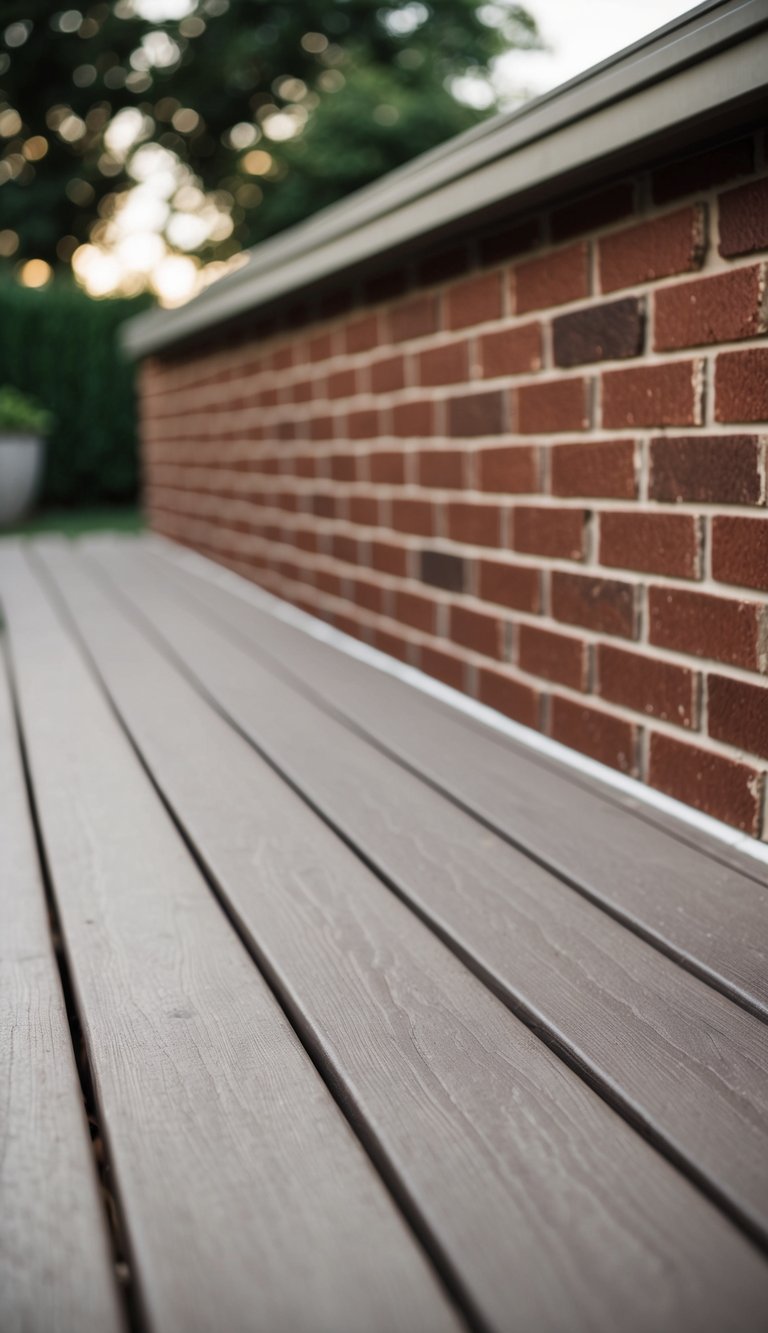
Faux brick panels give your deck a classic look without the hassle of real masonry. These panels are lightweight, easy to install, and come in a range of colors to match your home’s style.
You can attach faux brick panels directly to the deck frame with basic tools. This project is within reach even if you don’t have much DIY experience.
Unlike real brick, these panels don’t require mortar or heavy-duty supports. You’ll get the appearance of brick while avoiding extra weight and higher costs.
Faux brick panels are made from durable materials that resist weather and insects. They’re also easy to clean with a hose or mild soap.
If you want a quick way to give your deck skirting a raised, finished look, faux brick panels are a practical option. They pair well with both modern and traditional decks.
Recycled Composite Skirting
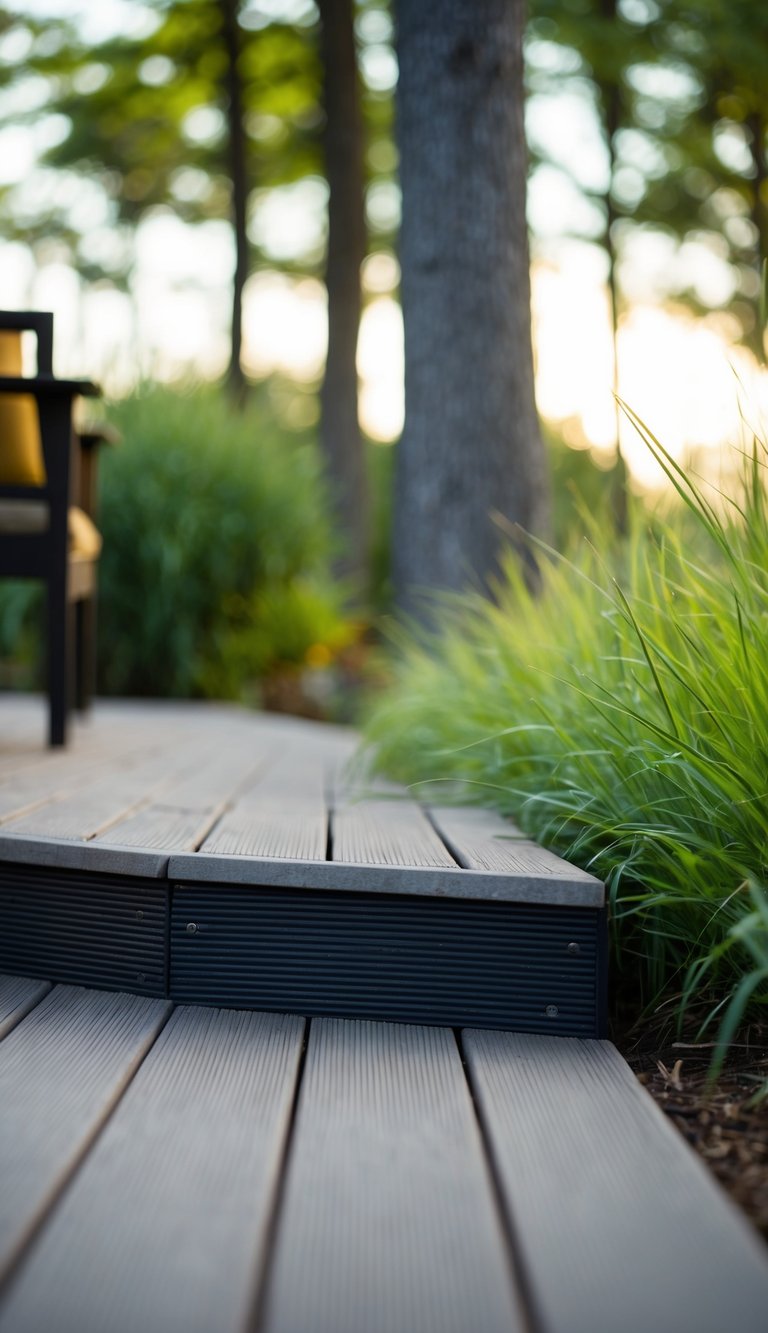
Recycled composite skirting offers a practical and stylish way to finish off your deck. Made from a blend of recycled plastics and wood fibers, this option gives you a modern look with less maintenance.
You can find composite boards in various colors and finishes to match your deck’s style. Many brands provide skirting panels that resist fading, moisture, and insects, making it easier to maintain the area under your deck.
Installation is usually straightforward. Composite boards are often lighter than full wood planks and can be cut to fit your specific design. You just need basic tools and some patience.
Choosing recycled composite skirting is a sustainable option. It uses materials that would otherwise go to waste, reducing environmental impact while providing a durable barrier.
Regular cleaning with soap and water helps keep your composite skirting looking new. Since it doesn’t splinter or rot like traditional wood, you’ll spend less time on repairs.
Rustic Pallet Boards
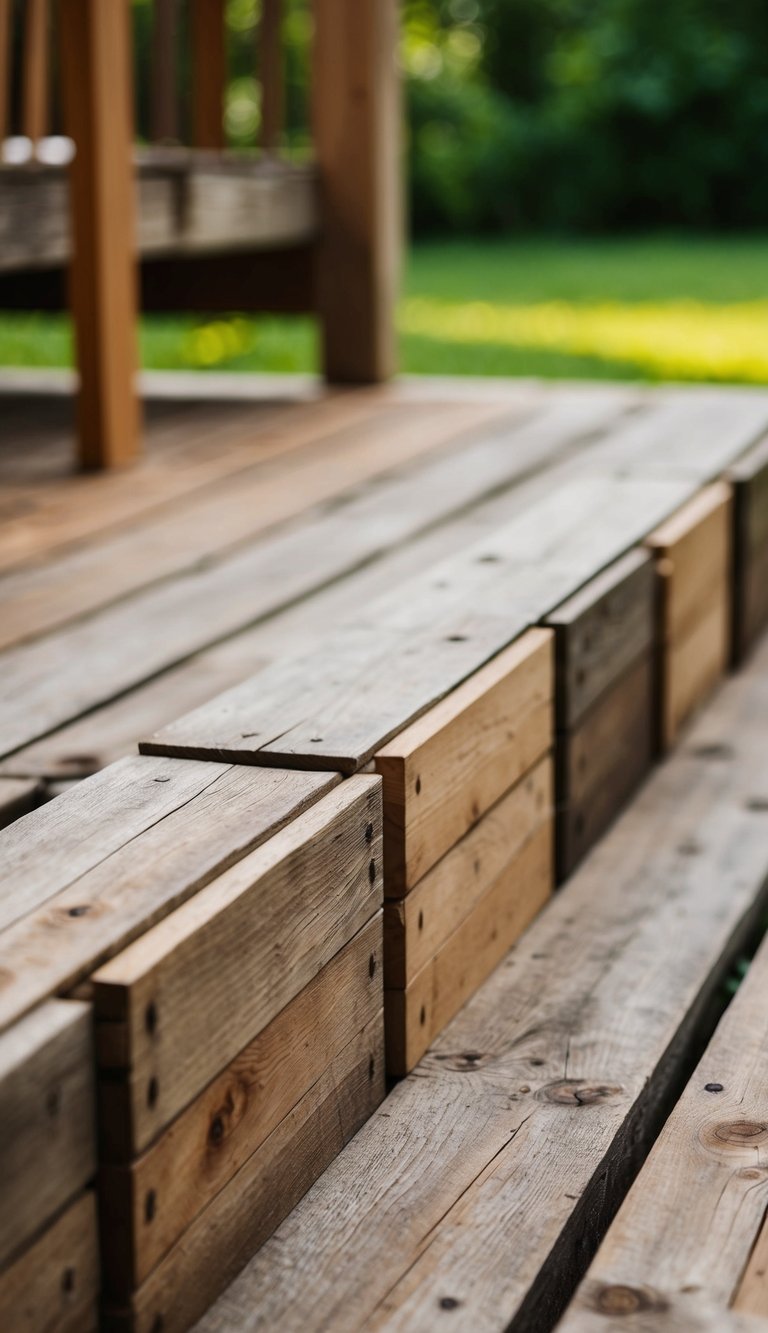
Using pallet boards for deck skirting is an affordable and creative way to add a rustic touch to your outdoor space. You can easily find pallets at hardware stores or online marketplaces, often for free or at a low cost.
To get started, clean and sand the boards before attaching them to the deck frame. For a more authentic rustic look, consider leaving some signs of weathering or uneven edges.
You can arrange the boards horizontally, vertically, or even in a chevron pattern, depending on your style. Painting or staining the wood in earthy tones will help the skirting blend in with natural surroundings.
Pallet board skirting also allows for decent airflow under your deck, which can help prevent moisture problems. If you want a unique, eco-friendly project that doesn’t require a lot of special tools, pallet boards are a good choice.
Bamboo Screens
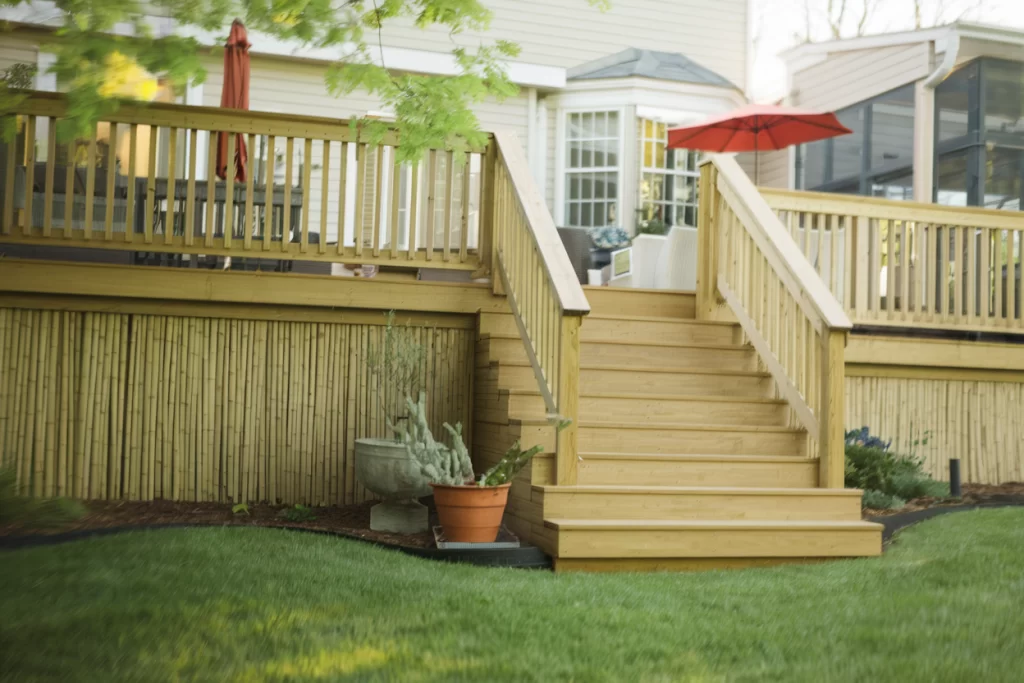
Bamboo screens are a simple way to give your deck skirting a natural and relaxed look. They work well because bamboo is lightweight and easy to install around a deck’s base. You can usually attach the panels directly to your existing deck frame with basic hardware.
Bamboo blends easily with different outdoor styles. If you like a tropical or Zen-inspired space, bamboo will fit right in. The neutral color also matches most decks, whether you have wood, composite, or stone surfaces.
You can buy bamboo screens in rolls or panels of varying heights. Cutting them to fit your deck is straightforward with basic hand tools. It’s also possible to stain or seal the bamboo if you want to change its color or add protection.
Bamboo is a renewable option, which makes it an eco-friendly choice compared to some synthetic materials. With simple care, it should last for several years outdoors. Regular cleaning and sealing will help keep it looking good.
Deck Skirting Materials Explained
Your choice of skirting material affects how your deck looks and how long it lasts. Budget, appearance, and local conditions also play a significant role.
Comparing Wood, Composite, and Metal
Wood skirting is classic and budget-friendly. You can paint or stain it for a custom look. Cedar and pressure-treated pine are common choices because they resist rot better than basic lumber. Maintenance is higher—you’ll likely need to repaint or reseal every few years.
Composite materials are made from wood fibers and plastic. They’re resistant to insects, moisture, and fading. You won’t need to stain or paint composite skirting. Most brands offer several neutral color options, but they tend to cost more upfront than wood.
Metal skirting includes options like aluminum or galvanized steel. These materials don’t rot, warp, or invite termites. Aluminum can dent easily, but steel is heavier and holds up better to impacts. Metals give a modern look and require little upkeep, though they can cost more than wood.
| Material | Pros | Cons |
|---|---|---|
| Wood | Budget-friendly, classic | Needs maintenance |
| Composite | Low-maintenance, durable | Higher cost |
| Metal | Very durable, sleek look | May dent or rust |
Choosing Durable Options for Your Climate
If you live in a humid or rainy area, avoid untreated wood as it may rot quickly. Pressure-treated lumber, composite, or metal will last longer in wet conditions.
For dry, sunny regions, look for UV-resistant composite or painted metal. Sun can cause fading and cracking, especially on wood without protection. Composite won’t splinter or warp in the heat, and powder-coated metals are less likely to rust.
In coastal zones with salty air, galvanized steel or specially coated aluminum work best. Salt can corrode unprotected metals and wear down untreated wood. Checking for products rated for extreme climates ensures your skirting withstands the local conditions.
Design Tips for a Stylish Deck Skirt
Deck skirting does more than hide the area beneath your deck—it can set the entire tone for your outdoor space’s look. Matching your deck skirt with your home and making use of colors and textures builds harmony and adds visual interest.
Blending Skirting with Your Home’s Exterior
You’ll want your deck skirt to feel like a seamless extension of your home, not an afterthought. Start by noting your home’s materials, such as brick, stone, siding, or wood. Choose skirting that echoes these details to create a unified look.
Focus on matching or complementing colors. For example, pair a gray deck skirt with gray house trim, or use horizontal slats for modern homes and lattice for more traditional houses. Use this checklist:
- Match material
- Repeat home colors
- Consider architectural style
- Keep proportions balanced
Take note of any existing textures or lines on your home’s exterior, echoing these elements in your skirting for a pulled-together appearance.
Incorporating Color and Texture
Choosing colors wisely ensures that your deck skirt doesn’t stand out awkwardly. Stick to neutral shades like white, gray, or tan for a timeless look, or select a color from your home’s palette for coordination. If you want contrast, use it in moderation—a deep brown skirt under a cream house can highlight the deck’s shape.
Texture adds dimension. Lattice panels, vertical boards, or horizontal planking each provide a different effect. Combine materials, such as stone and wood, if your home exterior features more than one material. Use this table for quick reference:
| Texture Style | Best For |
|---|---|
| Lattice | Traditional & cottage exteriors |
| Vertical Boards | Tall decks or to elongate the space |
| Horizontal | Modern or ranch-style homes |
Experiment with finishes—matte, semi-gloss, or natural wood grain—to get the right level of shine and character. Use subtle variations to avoid a flat look.

